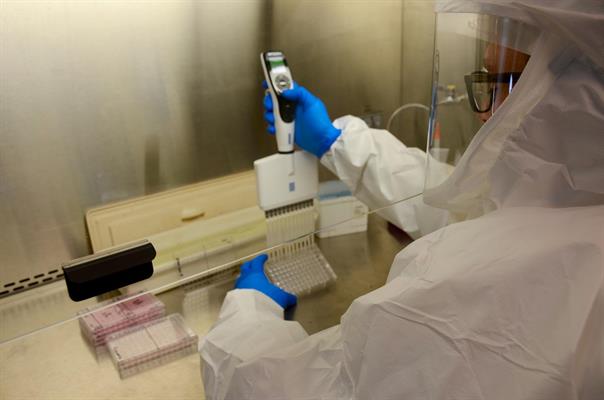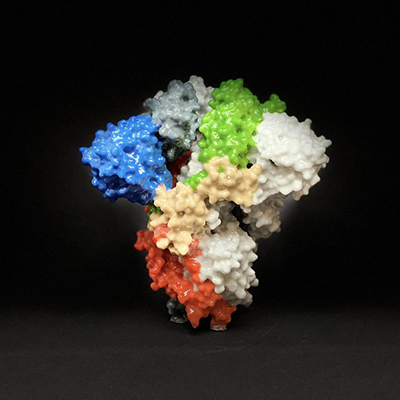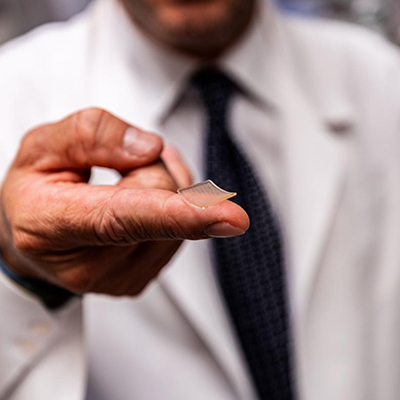April 10, 2020 -- An antiviral drug called EIDD-2801 that's in preclinical testing has potential to be developed into the silver bullet that medical professionals seek to treat COVID-19, according to new research published in Science Translational Medicine on April 6.
Since the onset of COVID-19 in late 2019, researchers around the world have been searching for a treatment for the respiratory disease, which is caused by the SARS-CoV-2 virus. No antiviral drugs are currently approved to treat COVID-19 or any other diseases in humans caused by coronaviruses.
But EIDD-2801 has that potential, according to the senior author on the paper, Ralph Baric, PhD, a distinguished professor of epidemiology at the University of North Carolina at Chapel Hill (UNC-Chapel Hill).
"This new drug not only has high potential for treating COVID-19 patients but also appears effective for the treatment of other serious coronavirus infections," Baric said in a statement.
An urgent need
The emergence of SARS-CoV-2 and other coronaviruses highlights the urgent need for broadly active antivirals to provide a rapid response to new coronavirus outbreaks in humans and animals.
One of these candidates is β-D-N4-hydroxycytidine (NHC, EIDD-1931), a compound that has broad-spectrum antiviral activity against many RNA viruses. In the new paper, researchers from the UNC-Chapel Hill, Vanderbilt University Medical Center, and Drug Innovation Ventures at Emory (DRIVE) explored its potency against coronaviruses.
First, the team studied the antiviral effect of EIDD-1931 in primary airway epithelial cell cultures and found that it was potently antiviral against SARS-CoV-2, MERS-CoV, and SARS-CoV without cytotoxicity. Next, they developed an orally available prodrug form of EIDD-1931, called EIDD-2801, that was designed for improved pharmacokinetics and oral bioavailability in humans. EIDD-2801 was then tested in mice.
Upon oral administration of EIDD-2801 in mice infected with SARS-CoV, the researchers observed significantly less body-weight loss and significantly reduced lung hemorrhage in a dose-dependent manner. The researchers also determined that when administered at 12 and 24 hours after infection, EIDD-2801 was able to reduce the viral load and prevent lung damage in addition to reducing weight loss.

The kinetics of SARS-CoV in mice are compressed, with peak lung titers appearing at one to two days after infection, compared with seven to 10 days after onset in humans. So, while the window of opportunity to treat mice is within 24 hours after infection, in humans the window for this COVID-19 therapy may be in the first week.
The researchers propose that the mechanism of action of EIDD-2801 against targeted viruses may be via induction of error catastrophe related to increased nucleotide transitions of the RNA-dependent RNA polymerase that the viruses require to replicate. Increased mutation rates were positively correlated to degree of therapeutic efficacy in mice.
And EIDD-2801 could actually have an advantage compared with other compounds being developed for treating COVID-19. Researchers have identified that coronaviruses sometimes carry a mutation against remdesivir, a drug that is currently under preclinical development and in clinical trials for treatment of COVID-19.
"Viruses that carry remdesivir resistance mutations are actually more susceptible to EIDD-1931 and vice versa, suggesting that the two drugs could be combined for greater efficacy and to prevent the emergence of resistance," said George Painter, PhD, executive officer of DRIVE and director of the Emory Institute for Drug Development.
Clinical trials of EIDD-2801 are expected to begin in the coming months. If successful, the drug could be used not only for SARS-CoV-2 but also for future outbreaks of newly emerged coronaviruses.
"With three novel human coronaviruses emerging in the past 20 years, it is likely that we will continue to see more," said lead author Timothy Sheahan, PhD, assistant professor of epidemiology at UNC-Chapel Hill and a collaborator in the Baric Lab. "EIDD-2801 holds promise to not only treat COVID-19 patients today but to treat new coronaviruses that may emerge in the future."
Do you have a unique perspective on your research related to infectious disease research? Contact the editor today to learn more.
Copyright © 2020 scienceboard.net








